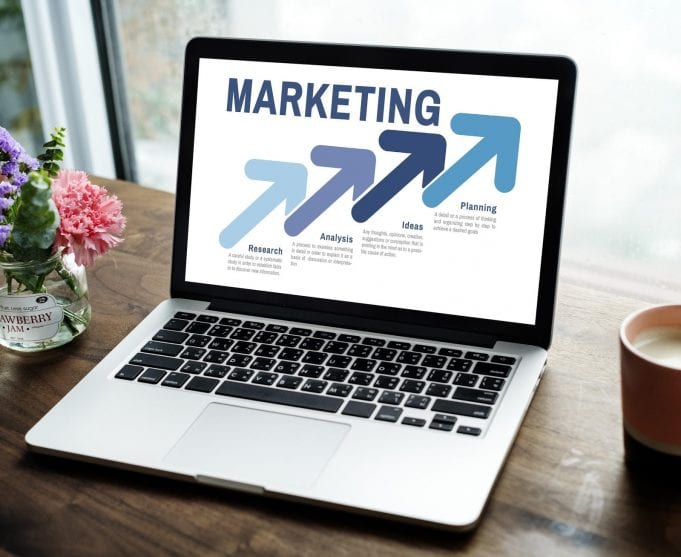Marketing is always evolving. Even more in recent years, with the advent of the digital world. This ever-changing nature of marketing is what makes it so fascinating.
If you are on the prowl for the newest things in advertising, these are five predictions on the best trends that are already shaping its future.
1. Evergreen Strategies Will Always be in

Printing marketing material can be quite useful, particularly when the material includes photos or other visuals. It is important to produce a high-quality printout that can be used in brochures, pamphlets or books. However, when we think of printing, we usually think that we’ll need to hire a professional graphic designer, which can be very expensive. It doesn’t have to be this way! For example, with thousands of designs and limitless customization options, you can easily and quickly make a brochure online even if you have no design experience.
“Seeing a photograph that is printed and tangible is a different experience for all of us. It is more emotional and sticks with us for longer than seeing something on screen” says well-known photographer Paul Kowalski for Ink Station.
However, he also notes that “printed photographs have to be printed extremely well to be appreciated”. Cheap, substandard copies are not accepted by the market nowadays. People are aware that technology has not only created accessibility, but also great quality.
2. Moving Mobile
The number of mobile users is expected to exceed 5 billion, and the number of smartphone users in the world is expected to reach 2.7 billion by 2019. During the past few years, mobile technology has evolved at an incredible pace. Nowadays, smartphones are seen everywhere.
This smartphone revolution will have a great impact on digital marketing. Marketing campaigns that want to reach as many people as possible, cannot ignore the mobile market and need to consider different ways to target mobile users.
This impact has even been recognized by Google, who has adapted its search algorithm to consider mobile-friendliness. Now, if you want your page to be easily found, it must be mobile-friendly.
3. More Video-oriented

In our modern digital world, users are increasingly watching videos using computers, smartphones, and tablets. Videos allow advertisers to create a strong connection with different audiences anytime and anywhere.
In general, video advertising is interactive, short in duration, and super entertaining. Advertising videos must present a novelty or something that attracts the curiosity of the viewer.
Technology has also evolved, and now it is possible to create multi-screen videos that adapt to different media.
Videos help advertisers to present businesses as something run by human beings, who have similar needs to the viewer. This effect is even more present in webinars, where a speaker can reach audiences located in many different places, and create a very personalized connection.
Video advertising is reaching beyond business. In November 2017, filmmaker Max Lanman posted a video on YouTube to help his girlfriend sell her 1996 Honda Accord. The video went viral and resulted in bids reaching over $150,000.
4. Highly Targeted Advertising
Present-day technologies allow marketers to target people in an increasingly personalized manner. From knowing your search keywords to personal details stored in social media, the amount of data available about us on the web is growing and growing.
Targeted advertising is nothing new. In the old days, it was called Direct Marketing. It was based on mail sent to specific groups, classified according to concepts such as age, profession, etc as stated by Navistone.
Applying this kind of thinking to your content strategy can be extremely powerful. By segmenting your different potential customers into several groups, you can target each one with content tailored to them. A tool such as this one makes this much easier to do. However you decide to manage this, just make sure that you keep track of everything and stay organized.
The difference is that today companies like Google and Facebook can collect more and better information, and thus, are able to create content that connects more. Reports by companies such as Salesforce and Hubspot indicate an increased effectiveness of Facebook highly targeted ads.
This trend is accompanied by advances in technology. In the near future, it will be possible to design a web page that changes according to who the user is, and that presents a highly personalized content based on its particular needs.
5. Increased Use of Artificial Intelligence

Big data and artificial intelligence (AI) are reaching everywhere, including marketing. Tools and data are used to drive Marketing Qualified Leads (MQLs), Sales Qualified Leads (SQL), and to optimize marketing campaigns and pricing.
Added to this, measuring marketing’s contributions to revenue growth is becoming more efficient through the use of analytics and machine learning.
According to an article in Forbes, in 2018, 84% of marketing organizations have been implementing or expanding AI. The results are impressive, with 3 in 4 organizations implementing AI and Machine Learning increasing sales by more than 10%. According to the same study, the main area where AI helps in improving customer experience and support.
The McKinsey report “Analytics Comes of Age”, released in January 2018 supports those findings. Even more, it shows that the areas where data and analytics have fundamentally or significantly changed businesses are the sales and marketing functions.
With such impressive stats, there is no doubt that AI and big data are two of the main forces that will shape the marketing of the future.









